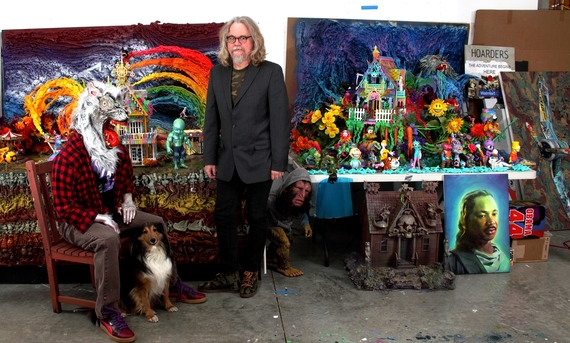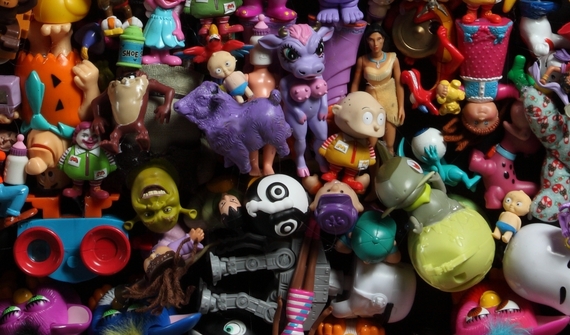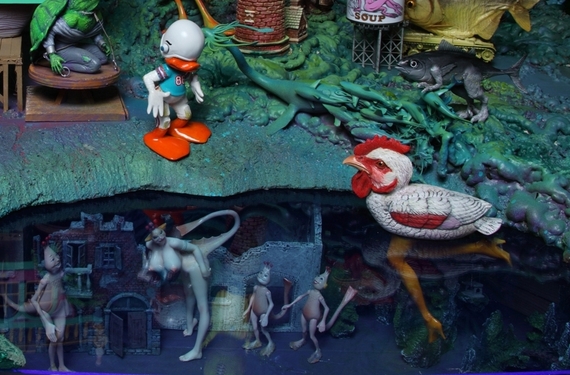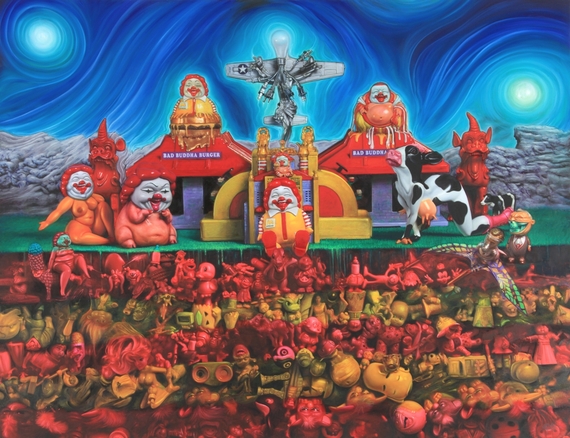Thoughts form easily, directed on their seamless journey by stray dialogue or random visual cues, and on rare occasions they trip portals into the deep subconscious and without warning reveal fleeting glimpses of the sublime before morphing back into random trivialities drifting like shadows on clouds. I never know when or from where the potent ones come, but I try to be ready.
Once I have an idea I need to get it down on paper before it vanishes as quickly as it appeared. I begin with shorthand sketches which serve as visual reminders, little scribbles I would be embarrassed for anyone to see. For some reason I lose the ability to draw when I am connected to my subconscious. It's almost like the two sides of my brain switch out at this moment. Once the ideas are saved, I can redo them in a more developed form, either drawn or rendered in clay or other materials.
During the second part of the process, I am more in the material world. I usually begin by creating three dimensional models, either by sculpting, kit bashing, building sets or finding actual locations. I hold only minimal allegiance to the original vision as I am working, allowing for small discoveries revealed through materials, process or luck. Amorphous imagery is transformed into real life objects that mimic the surreality of the original vision but create a more authentic relationship between the figures and the environment, where impossible perspectives and mythologies become actual yet physically distorted situations.
My camera is set up to establish a point of view before which the scene is arranged for optimal effect on a flat surface, much like a child's approach to a blank piece of paper and their uninhibited strategies for filling the page. Perspective is great until it gets in the way of telling the story. I may also set up shop in the natural environment, mixing in my own creations. I find this helpful in deciphering reflections on water with creatures beneath the surface, fire dancing across figures, or a deer's reaction to Bigfoot.
When everything is ready I take the picture and the photograph serves as the point of departure for the next step in the process. At this stage I may just play photorealist and dutifully copy the photograph with oil paint, or I may find new discoveries in the painting process. This might include internal lighting effects on the figures, abstracting parts of the composition or layering recaptioned comics, reinterpreted product packaging, irrational political posters or truthful advertisements as a background to evolve the central imagery.
Each step in the process is an opportunity to enhance the final product, which is usually a lot more intriguing than the original thought in my head and a lot easier to share. And, not unlike children, paintings have a rich life beyond the easel that is beyond your control.
A new body of oil paintings conceived utilizing this process will be on display beginning October 26th at Corey Helford Gallery In Culver City.





